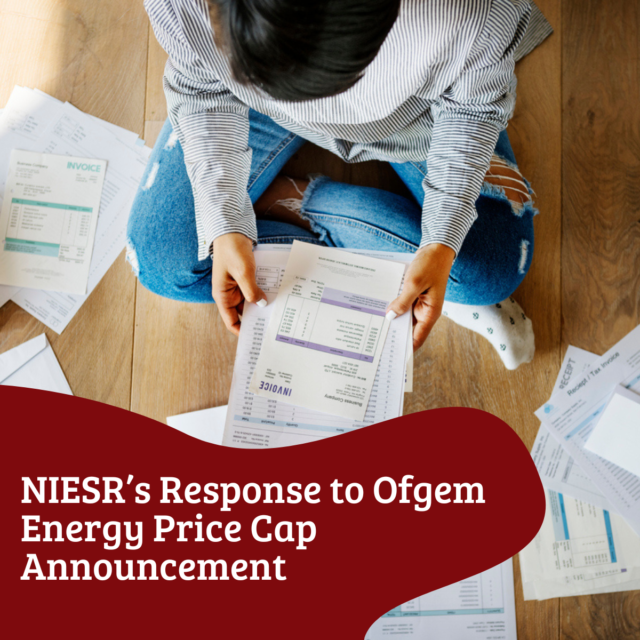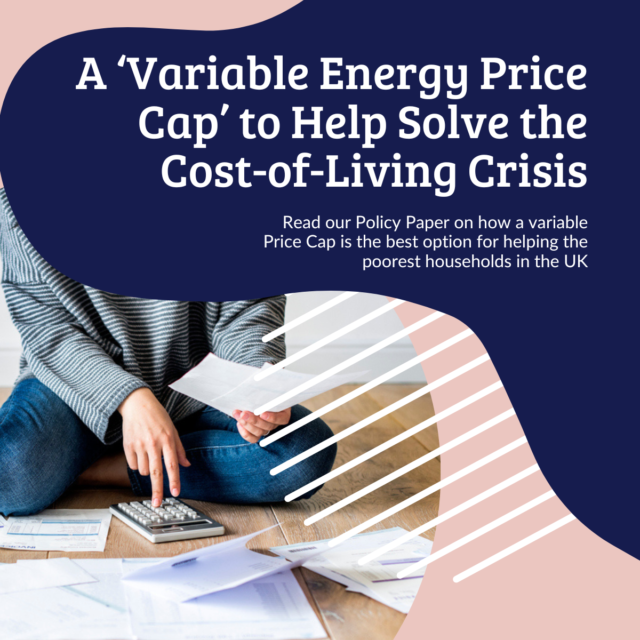Is The Government’s Energy Price Plan Fit For Purpose?
Shortly before the sad news concerning the death of HM Queen Elizabeth II, Prime Minister Liz Truss announced the new government’s plan to deal with energy prices and the escalating cost-of-living crisis.

In our first Monday interview after the summer, NIESR’s Director Professor Jagjit S. Chadha spoke with our Deputy Director Professor Adrian Pabst and our Economist in the Public Policy Team Max Mosley about the government announcement and what it means for households. They discussed the pros and cons of the government’s approach and alternative ways of helping household navigate such radically uncertain times – including NIESR’s recently published proposal for a variable energy cap.
What’s your assessment of the Prime Minister’s energy plan?
The Prime Minister’s energy plan published on 8 September in the House of Commons will see a freeze of the energy price cap at £2,500 for a typical household for two years, starting on 1 October 2022. This will replace the rise from £1,971 to the £3,549 level announced by the energy regulator Ofgem in August. The government’s plan doesn’t cap all bills at £2,500, but rather caps the price per unit 34.0p/kWh for electricity and 10.3p/kWh for gas (inclusive of VAT).
We take the view that this approach is not sufficiently targeted and unnecessarily expensive. This is because the plan still increases bills by some 30 per cent from their already high levels in April. The poorest household will still see an increase in their energy bills by around £400 per annum and face unsustainable bills of around £2,000 per year for as long as energy prices remain high.
In cash terms, the announcement will benefit richer households who consume disproportionately more energy, which makes the approach more like a universal subsidy instead of targeted assistance for those who need it most – the poorest and low-income household. At a total cost of £100-150bn this will represent a much expensive support package than the furlough scheme during the Covid-19 pandemic.
What are the alternatives to the government’s energy plan?
The challenge is to cut energy bills for the poorest and cushion the impact of the energy price shock for low- and middle-income households without subsiding at great expense those who can afford higher bills thanks to their income and their savings. Since the outset of the current cost-of-living crisis, we have argued for targeted assistance rather than a general subsidy as an economically more efficient and socially more equitable approach.
Specifically, we recommend an alternative idea which in principle meet this challenge by introducing a variable energy price cap whereby the cost of each unit energy used increases with the level of usage. On the whole, energy consumption and income are correlated, which means that low-income households use less energy than wealthier households. Depending on how a variable energy price cap is designed, the effect of such a proposal is to reduce the bills for the former and to raise them for the latter – possibly to such an extent that it pays for itself.
This approach could require little or additional state funding and retain the price signal, which in turn cuts the bills of those who can least afford it and incentivises lower energy use and thereby builds a green element into the cost structure – which a general subsidy does much less so.
What are the problems with this approach?
A variable price cap does have one big limitation because not all those who need help are low-energy users. Here are three examples:
- Low-income households in colder, wetter parts of the country
- Low-income households with more dependants (including disabled relatives)
- Low-income households living in poorly insulated homes
All three examples will have higher energy bills than average households in their income decile. It is conceivable that their energy use is very similar to that of a typical high-income household. The effect here is that we would be misidentifying the low-income house as being rich and raising their bills. It is for this reason that we do not recommend the use of a variable price cap as the sole means to respond to the energy bill crisis. Rather it could be used alongside other support packages, including Universal Credit and general cash payments.
A variable price cap would serve as a central response to this crisis, doing the heavy lifting in helping a majority of households. The state would then be able to deploy additional resources to help those who would lose out. Given that we know energy consumption levels and given that Universal Credit is the most administratively effective way to disburse help, the state can target assistance to avoid a further slide into destitution. The sheer scale of the current crisis calls for courage and imaginative policy proposals.





